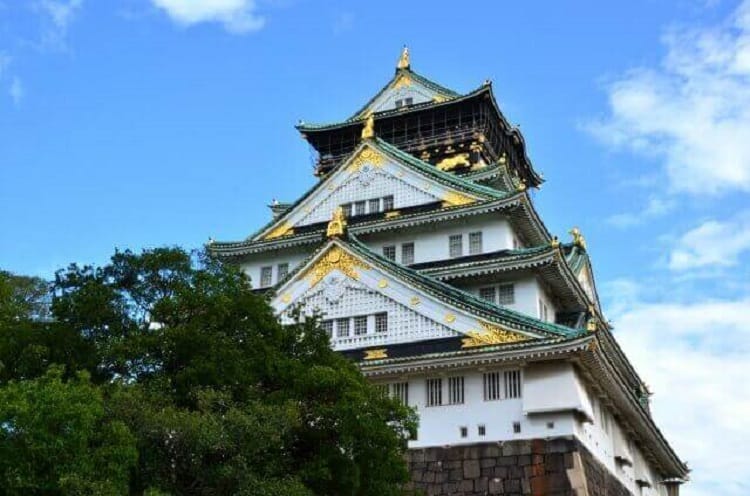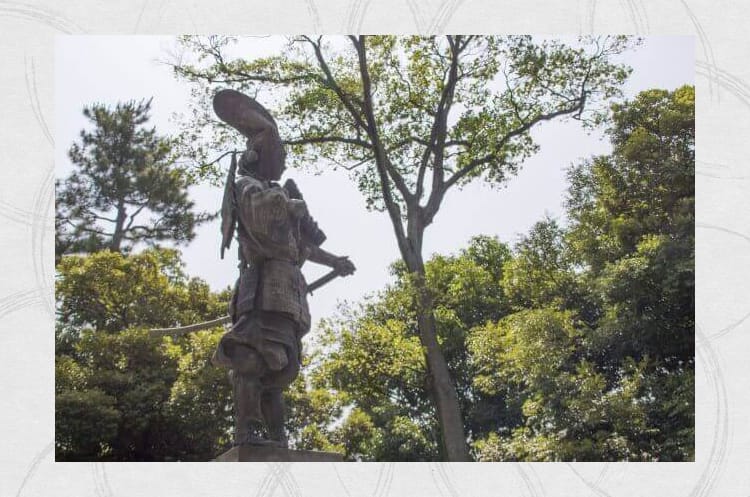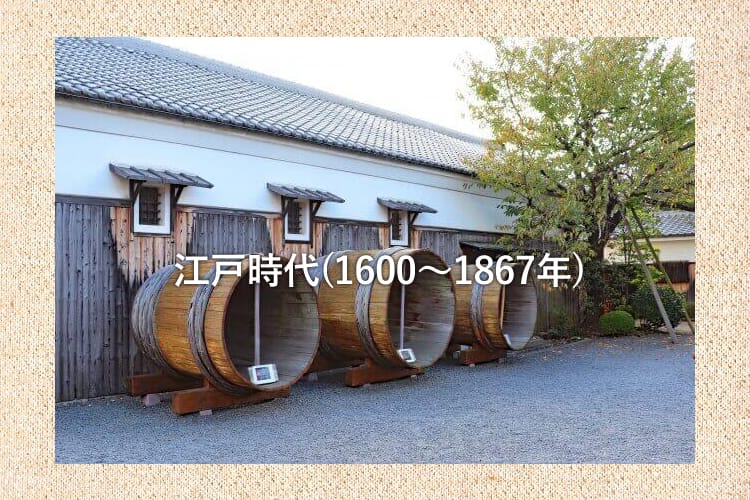
Sengoku / Azuchi Momoyama period (1493-1600 years)

The rise of “local sake”
Between the years of 1467 and 1477, the largest civil disturbance in Japanese history, the “Onin Rebellion” lasted for a long period of 9.
It was a battle that ended with almost no gain in both camps, even though the battle between the two shoguns and the famous Daimyo family became involved in the two major camps. Kyoto, the main battlefield, was severely damaged throughout and turned into scorched soil.
While the authority and trust of the Shogunate and the Imperial Court disappeared, Daimyo in each region tried to maintain and expand their own power, and the number of Sengoku warlords who consisted of merit based on the use of force increased. Eating or eating is the beginning of the Sengoku period of everyday life.
The nationwide grouping of Gunma also provided an opportunity to enhance the uniqueness of local culture.Liquor is the same, and until then, sake brewed in the region that was also called `` country liquor '' from Kyoto has risen. So-calledBirth of “local sake”.
Product distribution has become active, and local sake has entered Kyoto. I started to compete with brewers in Kyoto.
As a representative of local sake at that time,"Nishinomiya sake", "Kaga chrysanthemum liquor", "Izu no Egawa liquor", "Kawachi plain liquor", "Hakata no Nenuki liquor"Such as it will be mentioned.
There are various theories about the origin of the name “Kikushu”. The underground water of the Tedori River was used to prepare water for the chrysanthemum sake, but many wild chrysanthemums have long lived in the upper reaches of the Tedori River. One of the leading theories is that water was called “Kikusui”.
In addition, "Nenuki sake" is a sake made with glutinous rice and crushed with mortar.is. It has a paste-like trolley texture with shine like kneaded silk and has a very sweet taste. It was prized by the nobility of Kyoto and was also popular among Sengoku Daimyo.
Speaking of representatives of Sengoku Daimyo, Hideyoshi Toyotomi is the best. He is a person who achieved unification of the world that Nobunaga Oda was able to achieve despite being a peasant.
I mentioned before that Hideyoshi held the “Samurai Hanami” held at Daigoji Temple in Kyoto in 1598 years before his death.
It is a great banquet that invites guests of 1,300 people like Hideyoshi who likes luxurious and flashy things. It seems that most of the invited guests were women, but it seems like Hideyoshi, who is known for women.
In order to enliven this grand banquet, Hideyoshi gathered a wide variety of fine sake from all over the country and acted on customers. I introduced it earlierThere is a record that Kaga chrysanthemum, Nenuki sake, Egawa sake etc. were also served at this party..
The cherry blossom viewing before “Sakura Hanami” literally means “seeing flowers”. It seems that they only loved cherry blossoms quietly.
Compared to that, our current cherry blossom viewing is more often focused on drinking and drinking than just looking at flowers.
The beginning of this cherry blossom viewing style that continues to the present day of the 21 century"Cherry blossom viewing"It is said that.
As an aside, Hideyoshi did not seem to have much liquor. Perhaps they were drunk with their own glory when they saw that they were happily drinking nationally-designed sake that they had behaved rather than drinking themselves.
~ With the weakening of the temple forces, the monk liquor is destroyed ~
It was around this time that the monk liquor, which had been popular and appreciated for a long time since the Heian period, declined.. The trigger was driven by the powers,The weakening of the power of temples that continue to grow.
The best of them is by Nobunaga Oda“Bakeout of Hieizan Enryakuji”It will be. Enryakuji at that time was too disciplined and corrupted.
Many of the monks crashed, eating forbidden meat and bringing women into the temple. Furthermore, there were thousands of monk soldiers who boasted strong armed forces, and they were in a state they wanted to do, such as hindering distribution by raising tolls from the custom-built gates on the highway.
However, in society at that time, it was thought that Buddha punishment would occur if you turned the monk to the enemy, and no one could reach out. This will increase.
It was Nobunaga Oda who took this over. Nobunaga had an unbelievable rational idea of Buddha punishment.
First, to encourage free business and distribution"Rakuichi Rakuza"The policy was raised.Economic activities will be activated by the abolishment of government offices and tolls. The distribution of liquor has also been promoted and has spread all over the country.
With this “Rakuichi Rakuza”, large temples such as Hieizan Enryakuji Temple will gradually dry up economically. And the end is “Baking the Hieizan Enryakuji Temple”. This burnout killed as many as 3,000 to 4,000 people, from girls to children.
It seems that black smoke continued to rise from Ulsan for four days. Thus,The power of the temple has rapidly declined, and the prosperous monk liquor has hidden its shadow..
~ The original form of shochu making is born ~
Also, in this era, along with the new culture brought by foreigners,Distillers and distillation technology are introduced to JapanDid. ThisDistilled liquor (shochu) has been made in Ryukyu (current Okinawa) and the South Kyushu region.
By the way,In Japanese literature, the word “shochu” first appeared in 1559, the year before the battle between Saga.. It was a written letter on the wooden bill of the attic of Koriyama Hachiman Shrine in Oguchi City, Kagoshima Prefecture.
What happened is that the carpenters who completed the construction work at the shrine did not perform the expected shochu, and how the lord was stingy! It seems that it is a content that is complaining. I'm sure he was looking forward to a cup after finishing his work.
By the way, the most famous alien of this era is Francisco Xavier. He is a Jesuit missionary who came all the way from Portugal to a Christian mission.
That figure is also familiar in history textbooks (especially hairstyles).In fact, the first Westerner to drink sake is said to be Xavier.
There is a record that Xavier offered Chinta sake to Daimyo, such as Takahisa Shimazu and Yoshitaka Ouchi. Chinta is red wine.
In Portuguese, red wine is called "vinho tinto", so it's a word derived from that Portuguese.
By the way, there is a theory that the first person who drank wine in Japan is Oda Nobunaga (even in drama and animation etc. Nobunaga is drinking red wine often), but in fact he is sweeter than sake Seems to have been a favorite.
There is also an episode that was overjoyed to get a banana and a banana with lots of confetti from missionaries.
Every time that Nobunaga, known for his brutal behavior and himself named “Sixth Ten Demon King”, imagines his sight of losing his friendliness and chewing the confetti, he laughs at the unexpectedness and gap.
Anyway,Not only Japanese sake but also shochu and wine were introduced to Japan so that you can enjoy various variations of sake.That's why. It is the beginning of an era that is unbearable for Jinbei.
Edo period (1600-1867 years)

-The prototype of today's sake brewing is almost complete
① From seasonal brewing to cold brewing in winter
Until the early Edo period, sake was made throughout the four seasons. Shinshu, Azuma / Azake, Kanzen-zake, Kanzake / Spring, Haruzake and 1 times each year. It was.
However, it was an era when the quality of brewing technology was still insufficient, and during the warm season, the moromi during fermentation was rotten and often lost.
Therefore, the Edo Shogunate, which cannot afford to lose a lot of valuable rice, bans brewing outside the winter season"Cold building order"I will issue. With this touch,Sake brewing was only possible from the autumn equinox to the spring equinox..
In cold winter, the activity of microorganisms is weakened, so long-term fermentation is possible, resulting in a fine and fine flavor of sake.. In addition, since winter was a period of low agriculture, it was also a time when it was easy to secure the labor force of farmers who were producers.
In modern times, air conditioning technology has improved dramatically, and the number of sake breweries that brew sake has increased throughout the year, but many breweries still make brewery, especially in the winter. Daiginjo sake, in particular, is often made during the winter.
② Generalization of step preparation
When preparing mash of sake,"3 preparation"It is common to use this manufacturing method.
3 stage preparation is a method that puts the liquor made before mashing into the tank first, and then puts rice cake, steamed rice, and water into 4 days in 3 days.Say.
Why is it divided into 1 times instead of 3 times?To perform "safe sake brewing".
By dividing into 3 times, you can protect moromi from microorganisms that adversely affect sake brewingThat's why. This method of column preparation became common.Edo PeriodSuch you.
Most modern sake breweries use this “3 stage preparation” method to make sake, but there are also cases in which the number of preparations is increased by 4, 5, and 6 stages.
Some of them are also amazing “10 stage preparation”. It is "Ozeki Junmai Daiginjo Tendan" from Ozeki Corporation (Hyogo).
It has been produced over 2 times as much time and effort as ordinary sake, and it has a rich and deep sweet taste.
③ Set fire
I mentioned earlierIt was also during the Edo period that "fired" was establishedis. To fire is to sterilize alcohol at low temperature. Indirect heat for about 60 with hot water of about 65 to 30 ℃.
What is done to stop the action of enzymes remaining in liquor and kill excess bacteria that impair the aroma and taste of liquor.
The "discovery" of this pasteurization method was attributed to the French bacteriologist Pasteur, and after the discoverer's name, pasteurization was named pasteurization.
However, in Japan, this method has been used for hundreds of years before the discovery.
As this burning became more widespread and generalized,The preservation of sake has increased, and it has become possible to produce sake with a stable quality.It is
④ Formation of the group
Along with the establishment of cold making, during the Edo period, migrant only during the winter period to make sakeSkill group `` Touji system '' is bornWas.
During the winter, farmers who are unable to grow rice because of snow and fishermen who are unable to fish due to rough seas are engaged in sake brewing in search of work that can be done in winter.
In particular, the farmers who make rice are so-called rice professionals. It is perfect for sake brewing because it knows the rice that is the raw material of sake.
“Mr. Tsuji” refers to the person in charge of sake brewing. And the person who works under Mr. Tsuji is called “Kurabito”.
Mr. Tsuji and others have developed high technology and complicated methods one after another by accumulating experience and intuition.Gradually, “Mr. Tatsumi” groups with their own sake brewing styles were formed in various places to suit each climate..
Among the many Mr. Tsuji who still remain,Mr. Minoru Nanbu (Iwate Prefecture), Mr. Minoru Echigo (Niigata Prefecture), Mr. Minoru Tajima (Hyogo Prefecture), Mr. Minoru Noto (Ishikawa Prefecture)It is called.
Mr. Minami Nanbu has the most Mr. Tsuji. Next is Aoi Echigo. Mr. Echigo is very hardworking and persistent and is characterized by his strong commitment to superior technology and quality.
We continue to support the sake brewing in Niigata Prefecture, which boasts the number one brewery in Japan.
-Popularization of Sake (sake) by the rise of Itami Sake-
Moro white structure was improved in 1600 year.
Rice bran (rice used to make rice bran) and kake rice (rice that has been cooled and steamed directly into mash) are refined and made.Morohaku is a clear, unobtrusive sake that is close to modern sake..
Because it was a very precious luxury item, there was no chance to talk about it except for privileged classes such as powerful nobility.
However, a production method was developed in Itami to make these whites in large quantities and efficiently. Now, the sake that is not nigari sake (sake) has finally reached the hands of ordinary people.
They areIt is called “Itami Sake” and is a dry alcohol with a lot of alcohol.was. Reputation has gained popularity and has become very popular,Large volumes were transported from Osaka to Edo on “Hishigaki Kaisen” and “Tarukaisen”.
A “ship” is a sea transport ship of the Edo period. “Hishigaki Kaisen” was a ship that transported cotton, oil, cotton and soy sauce. The name was given to the fences on the left and right sides of the ship, which were decorated with wooden rhombus lattices.
In addition, “Karushusensen” is a ship that transported only sake barrels. The barrel ship was able to transport cargo faster and cheaper, so it gradually became a replacement for the Hishigaki ship.
You may have learned in a school history class.
In addition, The fact that Itami, the shogunate territory, became a Konoe territory in 1661 (Kanbun gen) was one of the factors that made Itami Sake prosperous.It is considered.
The Konoe family is a public house that follows the flow of the noble Fujiwara family. The guardianAccelerates development through the thorough protection of “Itami Sake”It was.
~ Is it the name of “Sutaru” in Itami Sake? ~
You say things that are n’t interesting or worthless are “stupid”. Did you know that there is a theory that the word comes from sake?
At that time, going up, such as Kyoto and Osaka, was called “up”, and going to Edo was called “down”. I was saying the opposite.
So,Sake that was sent to Edo from above, such as Itami, was called `` falling sake ''. It is said that the sake that did not come to Edo pointed to something that did not become “falling sake”, and that was the origin of “stupid”.
That's why “falling sake” attracted the people of Edo. By the way, if you calculate from the shipment volume of “downbound liquor” at that time,The consumption per 1 people has risen to about 1 DOO (4 bottles per bottle) over the course of 40.That's right. When converted into a month, more than 3 bottles per bottle. It ’s an unbelievable amount.
After that, the center of “downbound liquor” began to move from Itami to Kashiwa. It is around the current Hyogo Prefecture Nishinomiya City and Kobe City Higashi-Nada Ward. One of the factors isDiscovery of “Miyamizu”.
Miyamizu, which is low in iron and contains moderate amounts of minerals, belongs to the category of hard water among Japanese water with a lot of soft water and has excellent fermentability.
このIt was called `` Men no Sake '' because it became dark and dry with a strong taste when it was prepared in Miyamizu..
-Introduction of brewing stock (brewing license) system-
Currently, you need a license to make sake.Based on the liquor tax law, production is not permitted unless you obtain a production license from the head of the local tax office for each item of liquor you wish to produce.. This license system was introducedEdo PeriodEnglish learning is necessary to prepare for life, learning and interaction with the global environment. <br> IT Skills (programming logic) is necessary to prepare for the needs of the future.<br> Financial literacy is necessary to prepare for creating, managing and being smart with time and wealth.<br>
In 1657 year, Edo Shogunate"Sake Brewery"The system was established.
Sake brewing stock is a label that describes the amount of rice for brewing, and only those who have it are allowed to brew sake only within the specified stock price range.It is
The reason behind this brewing stock system wasFood situation such as famine and rice harvestis. In order to control these, the shogunate imposed brewing restrictions nationwide and was introduced as part of that.
There is a record that a total limit of 61 was issued throughout the Edo period.. On the other hand, when rice was a good harvest, there were times when we actively encouraged sake brewing. Throughout the Edo period, the restriction cancellation order was issued 6 times.
Because sake brewing requires a large amount of rice, the shogunate's restrictions on brewing were inevitable. But on the side of making it, it was a tough time when you weren't able to make liquor as you thought.
